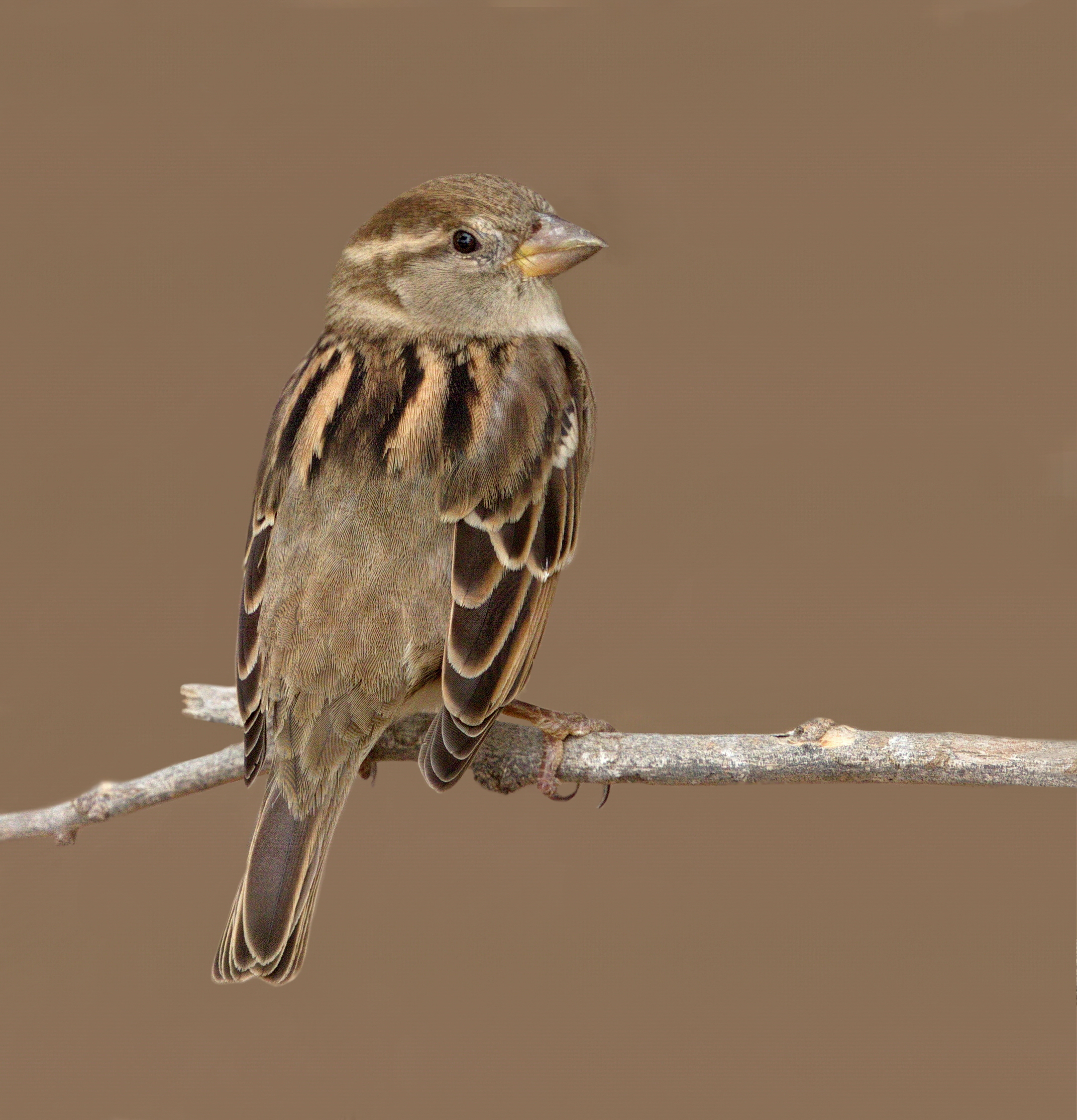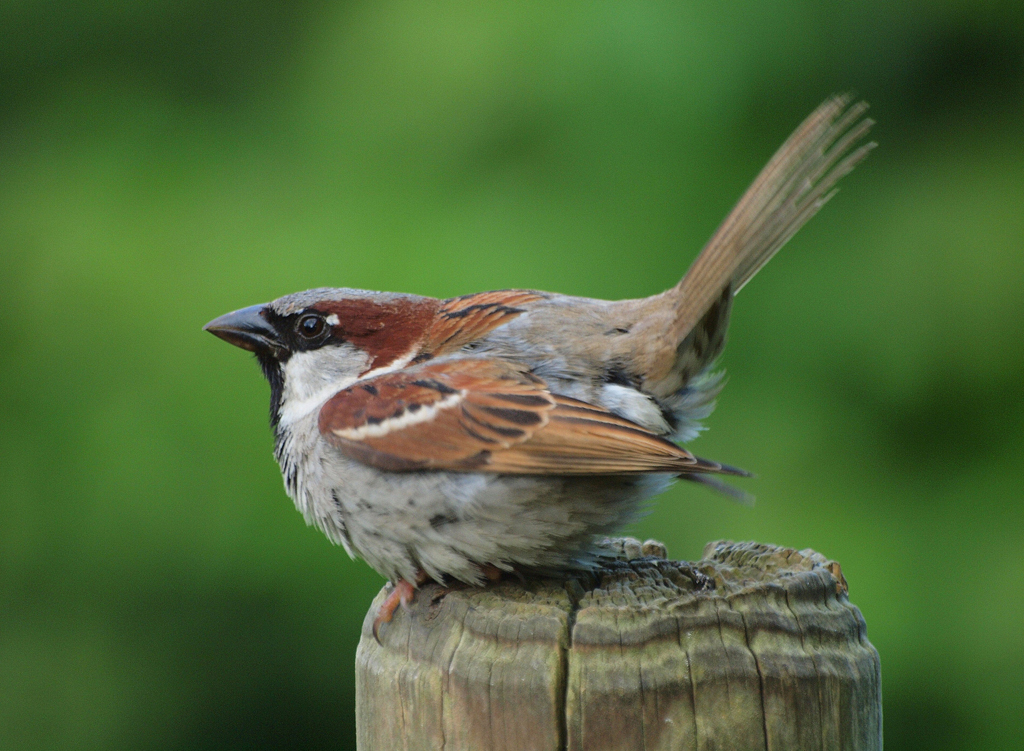Table Of Content

Types of Fox Sparrows include Red, Sooty, Thick-billed, and Slate-colored. Males sing a two-second loud musical trilling song that can carry over hundreds of feet away. In addition, both sexes also sing softer songs that are a mixture of warbles, trills, and whistles.
What do house sparrows eat in the winter?
Perspective "No More House Sparrow" by Jane Kim - Bay Nature
Perspective "No More House Sparrow" by Jane Kim.
Posted: Tue, 05 Oct 2021 07:00:00 GMT [source]
Plumage in females is drabber, with crests that are dark brown and post-ocular stripes that are light brown. Females lack black head markings and have gray-brown to light brown cheeks, bills and feathers (Figure 1a). Female plumage resembles juveniles and females from other Passer species so much that distinguishing them visually is often difficult (Anderson, 2006). Subspecies also differ in size, mass and male plumage (See Summers-Smith, 1988). From the northernmost tip of Scandinavia to the southernmost corner of Patagonia, and across six continents, house sparrows (Passer domesticus) inhabit most human-modified habitats of the globe. Here, we review the natural history of house sparrows, highlight what the study of these birds has meant to bioscience generally, and describe the many resources available for future work on this species.
#16. Green-tailed Towhee
Males and females both sing, but the females’ song is shorter and softer. Just like their color differences, the Fox Sparrows song varies depending on the region. Unlike other birds that nest in trees, Song Sparrows primarily nest in weeds and grasses. However, you’ll often find them nesting directly on the ground. These birds can be incredibly difficult to identify due to their abundance and how similar they all tend to look.
Beliefs, Superstitions, and Phobias About the House Sparrow
Food scraps and animal feeds are very important in urban, suburban, and farming areas. Many people are familiar with the ‘chirrup’ song of the House Sparrow. These birds are most vocal in the mid-afternoon, although you might hear them at any time of day. Adaptable and competitive, the House Sparrow is ubiquitous wherever we live and one of the few bird species that truly thrives in urban environments. A global alliance of nature organizations working to document the natural history of all bird species at an unprecedented scale. Nest in holes of buildings and other structures such as streetlights, gas-station roofs, signs, and the overhanging fixtures that hold traffic lights.


Spoiled foods or exposure to novel toxins, for example, may activate the immune system (Martin and Fitzgerald, 2005). Humans and House Sparrows interact incredibly frequently, and the sparrows live their lives closely entwined with humans and manmade habitats. They display fierce aggression during nesting season and compete with other birds for nesting sites, especially bluebirds. House sparrows aren't popular among birders, and for good reason.
5 birds that top many people's 'don't like' list - Star Tribune
5 birds that top many people's 'don't like' list.
Posted: Thu, 05 Oct 2023 07:00:00 GMT [source]
White-throated Sparrow Range Map
House sparrows can build adjacent nests sharing common walls. Studies on house sparrow movements found that young birds are more likely to move away from the natal areas. Some of the natural habitats that they live in include forests, meadows, grasslands, deserts, desert edges, woodlands, and more.
House sparrows regularly re-use the same nest for the following brood. Field observations indicate that females can start laying eggs for the next brood as soon as 8 days after the chicks of the earlier brood have left the nest. However, in some cases, it took much longer for a sparrow female to start laying eggs after the preceding brood left the nest. The female house sparrow begins to lay eggs as soon as the nest is finished. These birds have a plant-based diet and tend to focus on seeds; they especially enjoy cracked corn and millet.
Henslow’s Sparrow Range Map
Interestingly, these birds are considered a separate subspecies known as the Timberline Sparrow (Spizella breweri taverneri) and look slightly. Their bills and upperparts are darker and the breast and face also have more contrasting colors. Luckily, they’re easy to identify, thanks to their rust-colored crown. You’ll often see them at backyard feeding stations, eating black oil sunflower seeds and other seed mixes on the ground. Look for them foraging and perching near the water’s edge, scratching up seeds and insects in brushy habitats.
Incubation of the eggs
These tiny birds are found in dry savannas, woodlands, fields, and villages of East Africa. They live in the humid forests of Peru, Ecuador, Colombia, and Venezuela, at elevations ranging from 8,200 to 11,150 feet. They can be identified by their olive-gray upperparts, yellow breasts and bellies, and rufous heads. They can be usually seen alone, in pairs, or in small family groups as they roam through leaf litter looking for insects and seeds. Tepui brushfinches are large and colorful New World sparrows with red heads. They can be also identified by dusky eyebrows and dark eye-lines; during the breeding season, the lines above each eye become nearly white.
And having a place for them to hide and find shelter will entice them to stay. But globally, the sparrow’s decline is a story we should heed, as it may help us better understand how to coexist with nature in the Anthropocene. The first house sparrow decline was actually reported in the 1920s, when automobiles began widely replacing horses. Sparrows feasted on the huge amount of spilled grain found in cities. When that food source was removed, sparrow populations decreased. The answer likely lies in a combination of factors, all tied to rapid changes in both cities and farms.
Their native range includes most of Europe and much of Asia and North Africa, and they were successfully introduced to North and South America, Australia, and Southern and Eastern Africa. House Sparrows are highly vocal little birds with a simple but familiar song. Most adults measure about six inches ( cm) from tail to bill. In case you’ve stumbled upon any of these birds, we hope this guide helped you identify which ones they were. Cinnamon ibons live in the montane forests and mossy forests above 3,300 feet in the Philippines.

No comments:
Post a Comment